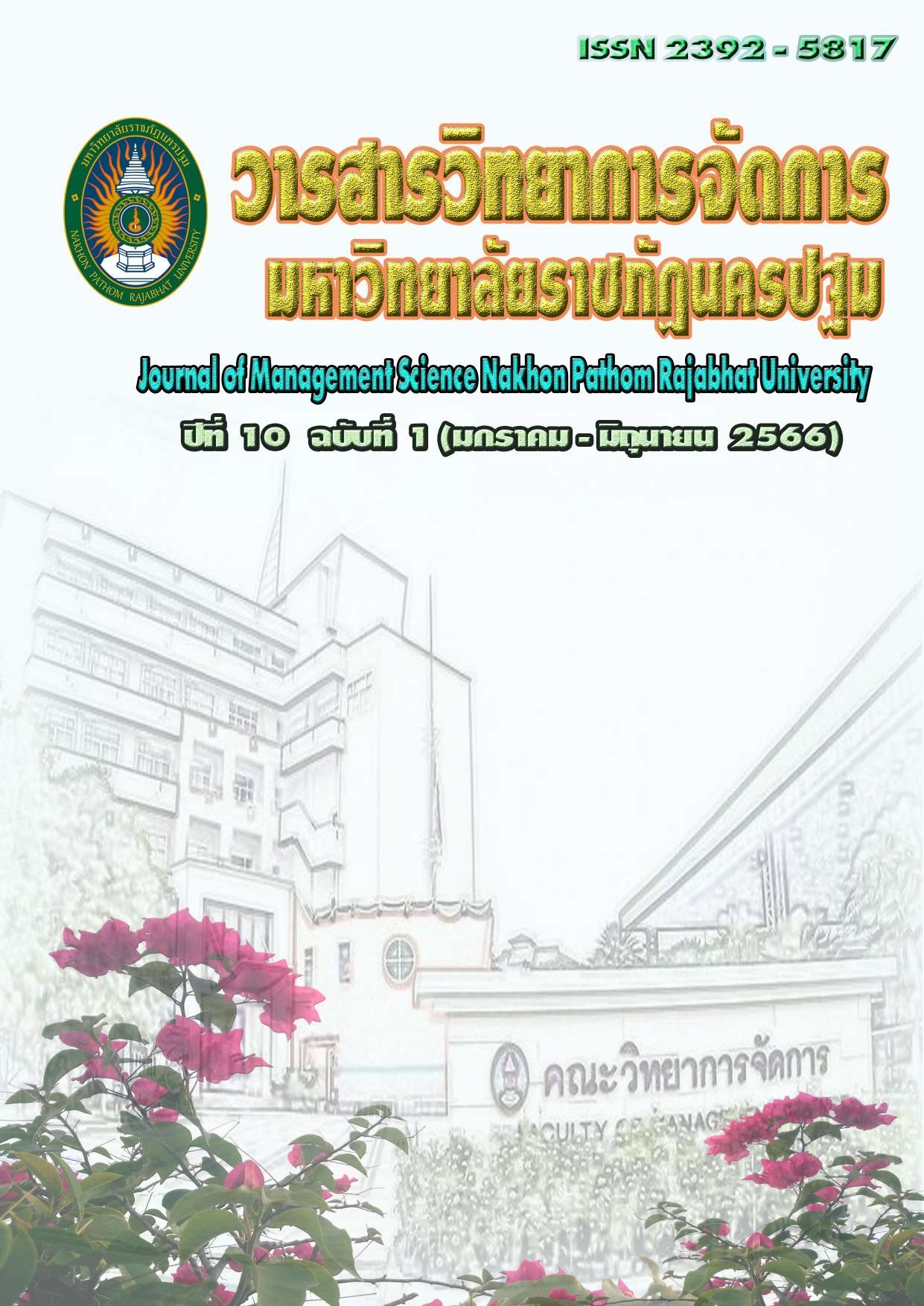Causal Factors Influencing the Success of Health Spa Business in Thailand
Main Article Content
Abstract
This research aims (1) to analyze the factors influencing the success of the health spa business in Thailand and (2) to examine the coherence of the causal relationship model of the factors influencing business success of health spas in Thailand with the empirical data. This research used mixed method research. The quantitative research method was collecting data by using questionnaires from health spa business entrepreneurs. The population was 9,080 and the sample size was 400 people. The qualitative research method was using in-depth, semi-structured interviews from 15 key informants related to health spa business. The statistics used in the data analysis were percentage, mean, and standard deviation. Data analysis to test research hypothesis was based on structural equation analysis.
The results showed that (1) The causal factors that had the most direct influence on the success of a health spa business were focus on service followed by the focus on marketing and service innovation respectively, the three variables could explain the variance in the success of the health spa business (R2) equal to 0.87 (87.0%) and (2) the causal relationship model found that the correlation model according to the research concept was consistent with the empirical data. The harmonious index of the model was as follows: X2=288.85, df=116, X2 / df = 1.973, p-value = 0.051, GFI = 0.955, AGFI = 0.953, CFI = 0.988, NFI = 0.976, TLI = 0.988, RMSEA = 0.049.
Article history: Received 1 May 2022
Revised 21 May 2022
Accepted 23 May 2022
SIMILARITY INDEX = 3.69 %
Article Details

This work is licensed under a Creative Commons Attribution-NonCommercial-NoDerivatives 4.0 International License.
The views and opinions of the article appearing in this journal are those of the author. It is not considered a view and responsibility of the editorial staff.
References
คณะกรรมการยุทธศาสตร์ชาติ. (2561). ยุทธศาสตร์ชาติ พ.ศ. 2561- 2580. กรุงเทพฯ : สำนักงานคณะกรรมการพัฒนาเศรษฐกิจและสังคมแห่งชาติ.
พหล ศักดิ์คะทัศน์ และอิทธิฤทธิ์ พลังธีรสิน. (2553). การพัฒนาดัชนีชี้วัดและปัจจัยที่มีผลต่อความสำเร็จอย่างยั่งยืนของธุรกิจสปา และนวดแผนไทยโดยชุมชนในจังหวัดเชียงใหม่. การประชุมวิชาการของมหาวิทยาลัยเกษตรศาสตร์ ครั้งที่ 48, สาขาเศรษฐศาสตร์และบริหารธุรกิจ.
พิบูล ทีปะปาล และธนวัฒน์ ทีปะปาล. (2559). การจัดการเชิงกลยุทธ์. กรุงเทพฯ : อมรการพิมพ์.
ภักดี กลั่นภักดี อัศวิน แสงพิกุล และศิริเดช คำสุพรหม. (2563). การพัฒนาธุรกิจสถานประกอบการ สปาเพื่อสุขภาพระดับสากลในประเทศไทยสู่ความยั่งยืน. วารสารวิชาการสาธารณสุข, 29(6), 1147-1156.
ศูนย์เทคโนโลยีอิเล็กทรอนิกส์และคอมพิวเตอร์แห่งชาติ. (2555). งานวิจัยนโยบายประเทศไทย. [ออนไลน์].ค้นเมื่อ 11 สิงหาคม 2564 จาก https://www.nectec.or.th/nectec/policy-th.html
สมร ดีสมเลิศ. (2554). รูปแบบปัจจัยการมุ่งเน้นการตลาด ปัจจัยการมุ่งเน้นการบริการ ปัจจัยด้านองค์กร และปัจจัยนวัตกรรมการบริการ ที่ส่งผลต่อผลประกอบการของธุรกิจสปาเพื่อสุขภาพในประเทศไทย. ดุษฎีนิพนธ์บริหารธุรกิจดุษฎีบัณฑิต มหาวิทยาลัยอีสเทิร์นเอเชีย.
สุฐะภร จันทรา และวุฒิไกร งามศิริจิตต. (2563). การศึกษาปัจจัยความสำเร็จของธุรกิจงานบริการท่องเที่ยวเชิงสุขภาพ กรณีศึกษากลุ่มธุรกิจสปาเพื่อสุขภาพ. วารสารการบริการและการท่องเที่ยวไทย, 15(1), 58-71.
อัครพงศ์ อันทอง และ มิ่งสรรพ์ ขาวสอาด. (2557). การเปรียบเทียบสมรรถนะและประสิทธิภาพ การดำเนินงานของธุรกิจสปา. วารสารเศรษฐศาสตร์ประยุกต์, 21(1), 1-19.
Abker, A., Mohammed, M., Tebein, A. and Gafar, M. (2019). Strategic Orientation and its Impact on the Improvement of Service Innovation. International Journal of Economics, Business and Management Research, 3(7), 67-81.
Berry, J.W., Phinney, J.S., Sam, D.L., and Vedder, P. (2006). Immigrant youth in cultural transition: Acculturation, identity and adaptation across national contexts. Mahwah, NJ: Lawrence Erlbaum Associates.
Global Spa Summit. (2011). Wellness tourism and medical tourism: Where do spas fit?. Retrieved April 11, 2021 from http://www.globalspaandwellnesssummit.org/
images/stories/pdf/spas wellness medical_tourism_report_final.pdf
Hair, J.F., Black, W.C., Babin, B.J. and Anderson, R.E. (2010). Multivariate Data Analysis.
(7th ed). New York: Pearson.
Jiménez‐Zarco, A.I., Pilar Martínez‐Ruiz, M. and Izquierdo‐Yusta, A. (2011). The impact of market orientation dimensions on client cooperation in the development of new service innovations. European Journal of Marketing, 45 (1/2), 43-67.
Jaworski, B. J., and Kohli, A. K. (1993). Market orientation: Antecedents and consequences. Journal of Marketing, 57(3), 53–70.
Norasucha.V. (2007). Value chain management model for performance. (Unpublished master's thesis). Shinawatra University, Phathumthani.
Porter, M. E. (2006). The Competitive Advantage of Nation. Retrieved April 11, 2021 from http://www.geocities.com/allava_2009/strategy.html
Udriyah, U., Tham, J and Azam, S. (2019). The effects of market orientation and innovation on competitive advantage and business performance of textile SMEs. Management Science Letters, 9(9), 1419-1428.


